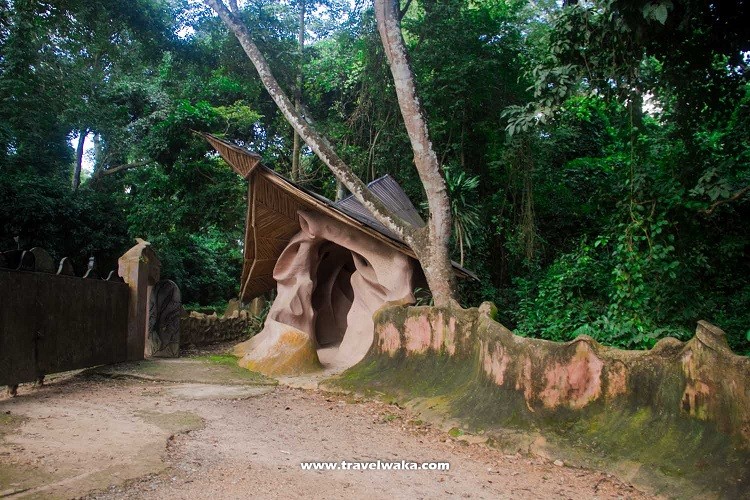The Osun Osogbo festival is one of the oldest festivals in Nigeria. It’s been practised for so many years. And this tradition is being passed down from generation to generation. The significance of a festival is in its continuity. This has awarded the Osun-Osogbo festival as the most celebrated ritual in the Southwest. Undoubtedly, festivals are intricate social events you want to be a part of. It covers a period when people and organizations are engaged in a range of activities in different locations. In Nigeria, festivals play a significant role in marking history and culture. Although, the earliest history of the communities where cultural festivals are celebrated may be found in the majority of African nations. Still, traditional festival celebrations serve as occasions for cultural analysis. This gives room for people to recall significant moments in their communities’ past and devise modifications where necessary. Beyond excitement, drums and dancing, cultural festivals are a traditional way for you to learn about Yoruba communities. Where is Osun-Osogbo located? Osun-Osogbo is located in the Southwestern region of Nigeria. It is about four hour drive from Nigeria’s commercial capital-Lagos. Osun Osogbo is located in Osun State. The state is regarded as the founding home of the Yoruba. It is the location of Ile Ife. The founding home of the progenitor of the Yoruba race. The origin of the Osun-Osogbo Festival The annual Osun Osogbo festival is a two-week-long celebration that includes twelve days of rituals, entertainment and cultural preservation. The first festival was recorded 700 years ago. The origin of the Osun-Osogbo festival is linked to the prominent role played by the Osun goddess in the establishment and settlement of Osogbo. The Osun goddess is highly revered as the goddess of fertility, giver of prosperity, goddess of children, a healer and a diviner by the Osun people. Women expecting children often attend the festival to seek fruit of the womb. A long time ago, after the ancestors of Osogbo discovered a new colony, they decided to liberate and develop the regions. All they had in mind was a habitation for themselves and their descendants. However, in the process of doing this, they came in touch with the “Oso Igbo” which means wizard of the forest. This happened when the ancestors cleared out a portion of land. A tree was cut down and it dropped on the river. It was recorded in history that the goddess was angry because of this and decided to appear to the wrongdoers. As a way to appease the goddess of the river for the distortion, the ancestors of Osogbo decided to offer a sacrifice. Thankfully, the river goddess received the sacrifice and made a pact with the people of Osogbo. Another notable occurrence was the representative that the goddess sent to the people of Osun. This messenger came in form of a fish and it was received on the palms of the traditional ruler at that time. The agreement was that the sacrifice would be done annually. In return, the Osun goddess promised to support and protect the inhabitants of Osun-Osogbo. The instructions were given to the people of Osogbo as a condition for their growth, wealth, safety and establishment. The inhabitants of Osun have since kept their part of the deal. Traditional rulers that have emerged, continue to offer sacrifices to the Osun goddess yearly. Location of Osun-Osogbo Festival, The Osun Osogbo Sacred Grove With a history dating back several centuries, the Osun-Osogbo Grove is one of the last remaining sacred forests in Nigeria. Sacred groves previously bordered most Yoruba settlements before widespread civilization. This has led to the destruction of most sacred groves. The Osun Osogbo Sacred Grove was listed as a UNESCO World Heritage Site in 2005 in recognition of its importance on a worldwide scale and its cultural significance. It is one of the two UNESCO world heritage sites in Nigeria. The Osun-Osogbo Grove was profaned in the 1950s when grove shrines were disregarded and priests left the area as traditional obligations and punishments decreased. Thanks to Susanne Wenger who brought back the glory of this once glorious heritage. Date of The Osun Osogbo Festival The date for the Osun Osogbo festival is usually celebrated in August every year. Remarkable Happenings at the Osun Osogbo Festival Despite the presence of other ancestral festivals in Osogbo, the Osun-Osogbo festival is the most popular and exceptional in the entire region. To add to this, the celebration is particularly well-liked not just among the Yoruba tribe in southwest Nigeria, but it is also globally renowned. It should be noted that the Osun festival is an orderly ceremony. Therefore, you need to understand the basis of the event and all there is to this exceptional practice. The festival is attended by tourists from different countries of the world, Here are the remarkable events that take place at the festival and all you should know about them; The road cleansing sacrifice The Osun Osogbo festival opens yearly in August with a road cleansing sacrifice- ‘Iwó Pópó’. This is a replica of the historical path clearing that took place years ago. This happening starts with the traditional clearing of the unwanted plants and trees along the central path of the community. It is necessary to prevent anything that might impede the inflow of visitors to Osogbo and demonstrates ancestral protection. Once this is completed, the Osun festival can begin in its full glory. Majorly, all the acts conducted at the festival are repetitions of the events that took place in Osogbo years ago. The role of the Traditional ruler- Ataoja, Osun priest and priestess It must be mentioned that the sacred rituals of the Osun Osogbo festival re-establish the spiritual union and renew the pathway between the goddess and the people of Osogbo. The Ataoja is the title of the traditional ruler in Osogbo. It is the short form of ‘Atéwógbeja’. This means the palms stretched out to receive the fish. I mentioned this in the history of the
